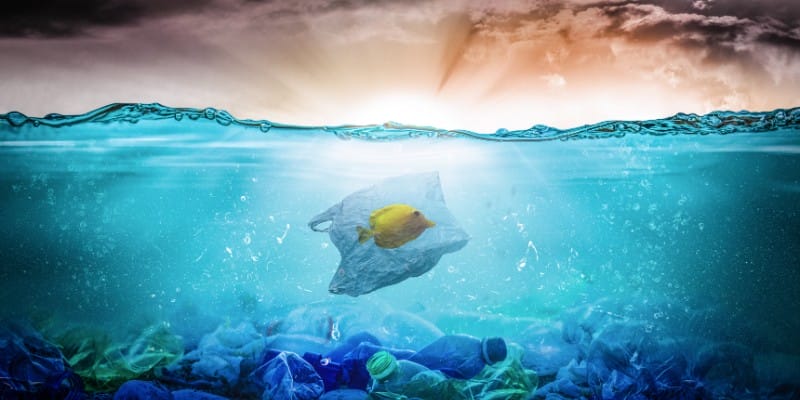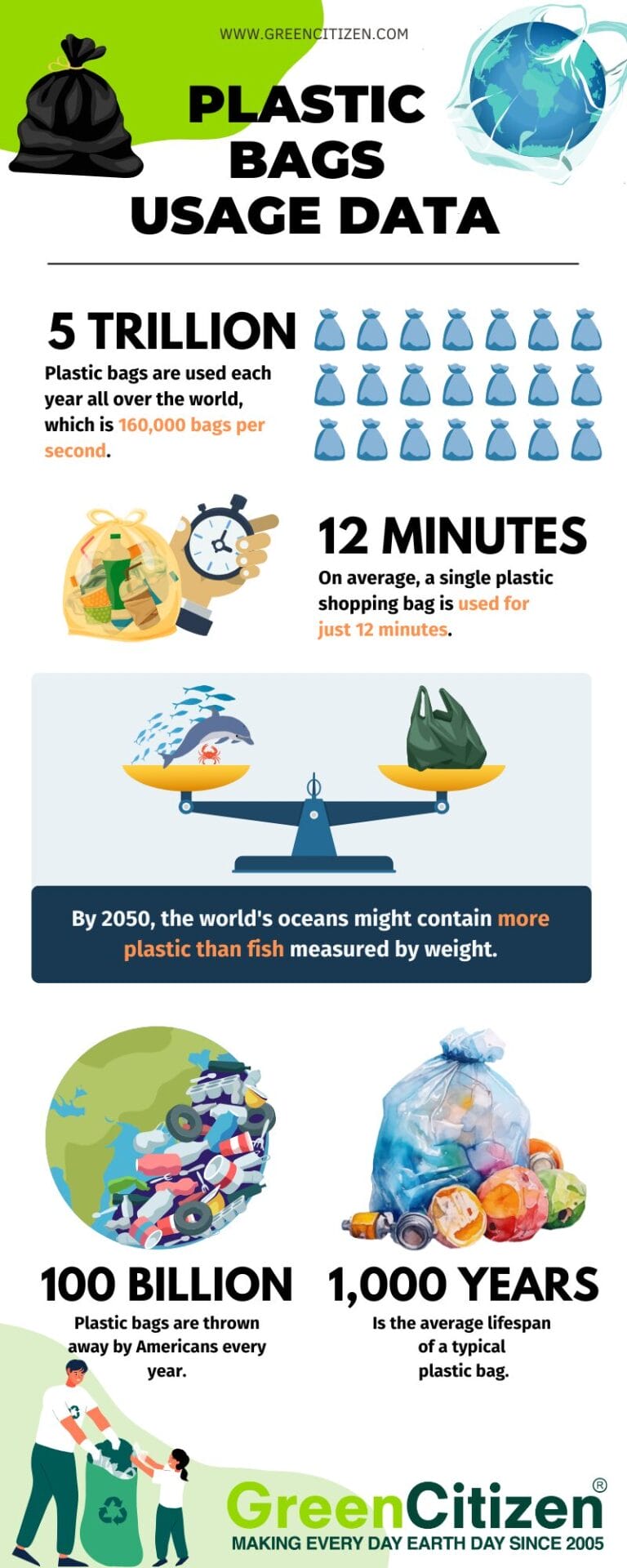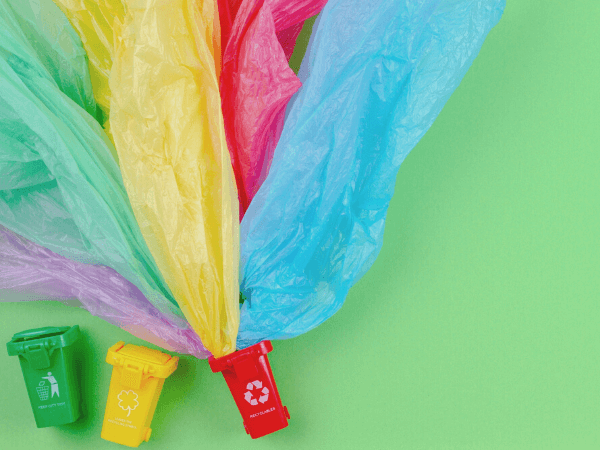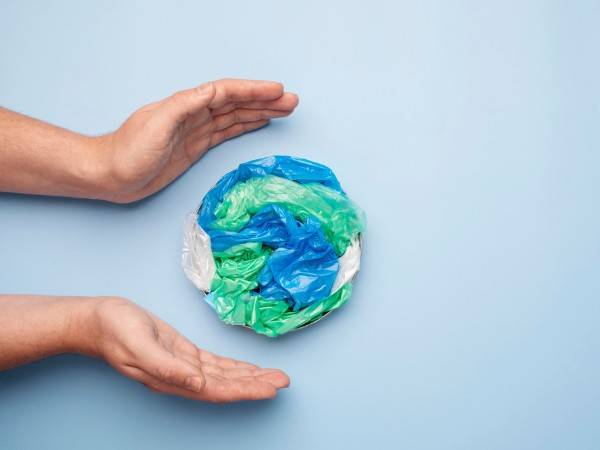All of us have that one drawer filled with plastic bags from various places. It’s tempting to just toss them out to clear up space. I almost did, until I discovered some startling figures: globally, we use 160,000 plastic bags per second.
Consequently, this adds up to about 5 trillion a year, and most end up in landfills. Clearly, we can do better.
Plastic bags are mainly made from polyethylene, a material that takes centuries to degrade. Even worse, less than 9% of these bags are recycled. As a result, our planet is already swamped with waste issues. Landfills are turning into mountains, oceans are choked with plastic, and dangerous chemicals are leaking into our soil. Therefore, it’s crucial that we address the plastic bag problem now.
In this article, I’ll explain everything about plastic bag recycling. Are they recyclable? Moreover, I’ll share stories from my own efforts to recycle. Ultimately, let’s find effective ways to deal with these bags and help our planet.
Can You Recycle Plastic Bags?

Yes, you can recycle plastic bags — and you shouldn’t be dumping them in your trash can. This goes for any thin, flexible plastic bags as well. You need to collect and send them to a verified recycler.
You can’t recycle plastic bags at home because they are made from high or low-density polyethylene. They are extremely lightweight and flexible and can get caught up in the recycling equipment and cause damage, which makes plastic bag recycling difficult.
The best way to recycle plastic bags is to take them to a dedicated retailer and authorized recyclers, as they know how to handle them best. Or, you can recycle plastic bags at large stores, shopping malls, and some chain stores. But never put plastic bags in your household trash or recycling bag.
Types of Plastic Bags You Can Recycle
1. Plastic Bags and Wraps
Plastic bags and wraps can be recycled, but not in the curbside bin. You need to recycle plastic bags and wraps through a store drop-off or at a recycling center.
Most communities don’t have the equipment for plastic bag and wrap recycling, and they end up being sent to landfills. This is why stores are a better choice.
Note: Some communities have started accepting plastic bags and wraps for recycling, so it’s best to check with your waste management program.
2. HDPE and LDPE Plastic Bags
HDPE, high-density polyethylene, and LDPE, or low-density polyethylene, can be recycled only in drop-off boxes in shopping malls and grocery stores that recycle plastic bags. These plastic bags are usually bread bags and Ziploc bags.
3. Plastic Wrappers
These include toilet paper, paper towels, and diapers. Plastic wrappers are made from soft plastics and can be recycled by taking them to allowed recycling centers and some supermarkets.
4. Bubble Wrap
Bubble wrap should be put with other recyclable plastic bags. Here’s the fun part: you should pop all the air pillows before taking bubble wrap for recycling.
5. Zip-Top and Sandwich Bags
Zip-top and sandwich bags are made from plastic film. You should check they are empty and there’s no residue inside, or they can’t be recycled.
6. Cereal box Liners
Most cereal box liners are made from HDPE film. You should remove all cereal residue before taking the bag to the recycling center, or it’ll contaminate other items to be recycled.
Understanding The Scale of Global Plastic Pollution
Plastic pollution is one of the most pressing environmental issues we face today. The production of plastic is rapidly increasing, and it’s overwhelming our ability to deal with it. This is especially an issue in developing countries in Africa and Asia, which don’t have efficient garbage collection systems.
Take a moment and consider these facts:

Plastic Ocean Soup
We use 100 million tons of plastic per year. 10% of this ends up in oceans. 300 million plastic bags end up in the Atlantic Ocean alone every year, and soon we’ll have plastic soup instead of clear water.
World’s major rivers are becoming conveyor belts. They pick up more and more trash as they go downstream and take plastic to seas and oceans. Once this plastic is caught in ocean streams, it’s transported around the world.
Here’s an example: Henderson Island is an uninhibited atoll between Chile and New Zealand. Scientists found plastic from Russia, the US, Japan, China, and Europe there. All of this plastic was carried by a circular ocean current called South Pacific gyre.
The problem is exacerbated by sea, sunlight, wind, and waves, which break down the plastic into small particles called microplastics. Microplastics has been found in every corner of our planet, from the heights of Mount Everest to the deepest ocean trough. Microplastics are even found in municipal drinking water systems and in the air.
Microplastics are doing extreme harm to wildlife. Millions of animals die because of plastic every year. Around 700 species are affected by plastic.
Fish and marine animals can’t digest this plastic, and animals die because of starvation or plastic entanglement. Tiny plastic bits block animals’ digestive tracts, piece organs, and pack their stomach with so much plastic that animals die.
This goes beyond sea animals. Land animals, such as elephants, hyenas, tigers, camels, and even cattle, consume plastic and, in some cases, are killed by it.
44% of plastic found in rivers, oceans, and shorelines, consisted of bottles, take-out meal items, and plastic bags in 2021.
By 2050, our oceans will have more plastic than fish.

How To Prepare Plastic Bags for Recycling?
Here’s how to prepare plastic bags for recycling step-by-step:
1. Remove the items inside — Take out any receipts, gum, stickers, crumbs, and other debris from the plastic bags. Otherwise, the bag will be contaminated and can’t be recycled. Shake the bag upside down to check it’s empty.
2. Check the bag is dry — Plastic bags, wraps, and films must be clean and dry when you take them to the recycling point. Apart from crumbs, check for the liquid inside the bags. If the bag is wet, let it air dry before putting it with other bags.
3. Check for the #2 or #4 symbol on plastic bags — This is usually found on the front or bottom of the bag, and it means the bag is made from recycled material. If the bag doesn’t have this symbol, you can’t know for sure what it’s made from, so you should reuse it instead of throwing it out.
4. Collect all bags for recycling — You can keep a collection bin in your home. For example, this can be one big garbage bag for all the bags. Bags are easily collapsible, so push down to remove any air, and you can fit between 50 to 100 plastic bags in just one garbage bag. Collecting bags in one big bag means you don’t have to turn your home upside down looking for bags, and it’s easier to transport them.
Overall, make sure your bag is completely empty, dry, and has a #2 or #4 symbol before recycling.
Pro Tip: If your plastic bags have paper labels on them, peel them off before taking the bag to be recycled. If the paper label won’t come off, cut it out with scissors.
Finally, if your plastic bag has a lot of food residue that won’t come off easily, you shouldn’t recycle it or risk contaminating other recyclable items.
Where to Recycle Plastic Bags?

There are several ways you can recycle plastic bags.
1. Take Your Plastic Bags to the Grocery Store
Many grocery stores and retail stores have designated areas where you can drop off your plastic bags. These areas are usually bins located near the store entrance.
Some stores accept other kinds of plastic items apart from bags, such as cereal box liners, dry-cleaning bags, and produce bags.
Some national chains that accept plastic bags for recycling are Target, Kroger, Walmart, and Safeway.
2. Authorized Recyclers
I mentioned that plastic bags aren’t easy to recycle. They are very thin and lightweight and can easily get caught up in recycling equipment. This causes delays in the recycling process and even damaged equipment.
But, authorized recyclers have the necessary knowledge and equipment to deal with plastic bags. Look for authorized recyclers in your area and contact them before you drop by to check if they accept plastic bags.
You can also look up corporate recycling programs in your city. Some companies collect materials through public drop-off bins. You can discard your plastic bags to be recycled through them.
3. Green Directory
Green Directory is the easiest way to find a recycling center that accepts plastic bags near you.
It’s extremely easy to use:
- Enter your address or location in the “zip code”
- Enter plastic bags in the “search for” bar
- Hit enter
You’ll get a list of all recycling centers near you, and you can choose which one works best. Plus, you can even decide how close the center is to you by selecting services provided within 5, 10, 25, 50, or 100 miles.
Recycled Plastic Bags and Waste-to-Energy (WtE) Models
By now, you know recycling plastic bags is an absolute necessity. But what happens to recycled plastic bags? Let’s go beyond recycling.
Recycled plastic bags are melted down and turned into new plastic bags. This is a good solution because it has a low impact on the environment. Manufacturers don’t need new plastic to create new plastic bags.
Moreover, plastic bags can be turned into composite lumber, which is mostly used for outdoor furniture. This means recycled plastic bags become furniture.
The most popular are:
- Decks — Recycled bags are commonly used for outdoor decks. They are broken down and turned into composite lumber, which is a great choice for outdoor projects because wood is moisture-resistant.
- Picnic Tables — Picnic tables are located outside, where they are exposed to all kinds of weather. This means composite lumber is a great material for them. The last thing you want is to sit at a picnic table and for it to collapse because it’s rotten.
- Park Benches — Same as picnic tables, park benches are exposed to different weather conditions. Once again, composite lumber is the best choice for them.
- Fences — Composite lumber made from recycled plastic bags is a great choice for fences because it’s moisture-proof. This ensures your wood fence won’t deteriorate after being rained or snowed on.
Cold Plasma Pyrolysis
All plastic materials, including plastic bags, can be turned into energy and chemicals via a process called cold plasma pyrolysis. This method is based on heating. Heating decomposes organic materials at high temperatures when there’s limited oxygen.
Cold plasma pyrolysis can be used to generate heat, fuel, and electricity and even used to recover other chemicals and materials. For example, this process can convert plastic bags into hydrogen and methane, which can be used as clean fuels.
This means plastic bags can be used as a part of a circular economy where waste is turned into new products or energy or used to recover materials that are sent right back into the industry.
How to Reuse Plastic Bags
I bet you’ve never given it much thought, but there are endless ways you can reuse plastic bags. Here are some ideas for plastic bag reuse.

1. Use Them as Garbage Can Liners
This is one of the best ways you can reuse plastic bags. Cut them up and tape them to the bottom of the garbage can to make sure liquids don’t leak into the can from the garbage.
You can also use plastic bags for bins that usually get wet, such as recycling bins or compost bins.
2. Plant Protectors
You can reuse plastic bags by using them as plant protectors. This is especially useful if you live in an area with cold and snowy winters.
Put a plastic bag over your outdoor plants. This will protect the leaves and petals from the frost, and you’ll have beautiful blooms come springtime.
3. Pet Waste
There’s no need to spend money on pet waste bags. Plastic grocery bags work just as fine. You’ll save money and the environment.
4. Stuff Patio Pillows
Are you sick and tired of running out at the first drop of rain and collecting the patio pillows? Do your pillows need days to dry out after it rains? Plastic bags are a great solution. Stuff your patio pillows with plastic bags, and drying them out will be a breeze.
5. Use Plastic Bags as Waste Baskets
We all know how quickly our cars fill up with trash. An easy solution for this is to use a plastic bag as a car waste basket. You can place the bag in the door compartments, so it’s easy to dispose of gum wrappers and disposable cups.
You can also use plastic bags as garbage bags around the house. Get some mini garbage cans and put plastic bags to line them. You can place these throughout the house, including the bathroom and bedroom. It’s especially handy if you have children who are always leaving trash behind.
6. Use Plastic Bags for Packing
Plastic bags make great packing material. You can use them to wrap delicate items, such as glass and ceramic, or to save family heirlooms.
This is a great trick when you’re moving house, as plastic bags provide a great layer of protection and cushioning, especially if you put bag-wrapped items on top of each other.
Can You Recycle Plastic Bags?
You absolutely can and should recycle plastic bags. Plastic bags are a big part of the larger plastic pollution problem troubling our planet. There’s never been a better and more urgent time to make a change than now.
Check if your local waste management accepts plastic bags for recycling or find an authorized recycler near you. Or, go the reuse route. There’s an almost endless way of reusing plastic bags, so choose one that works best for you. This way, you solve both your and our planet’s needs.

